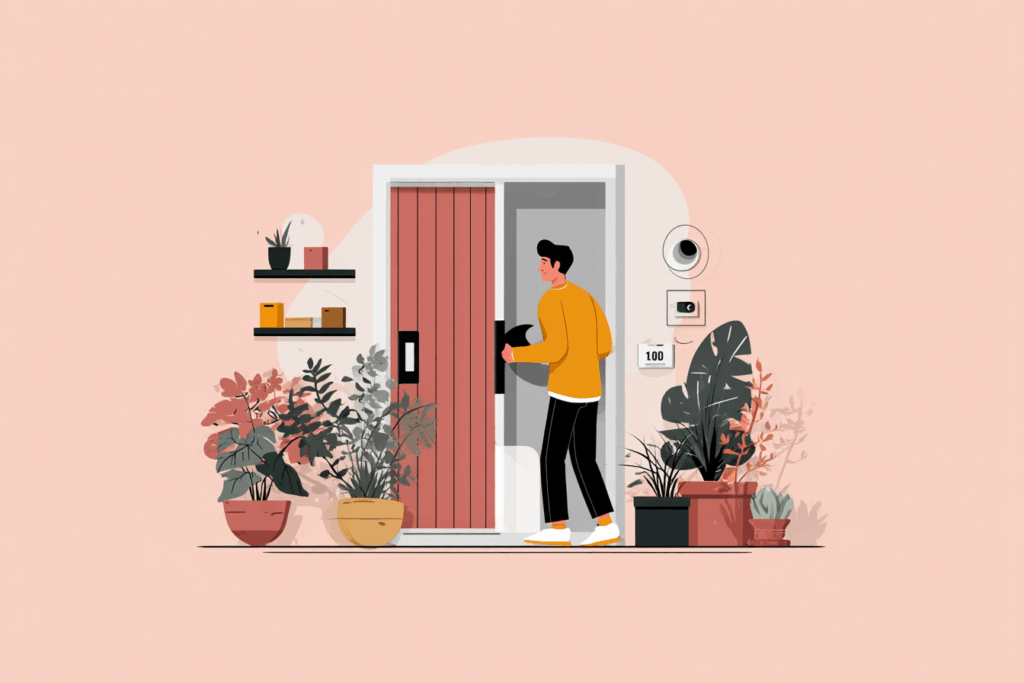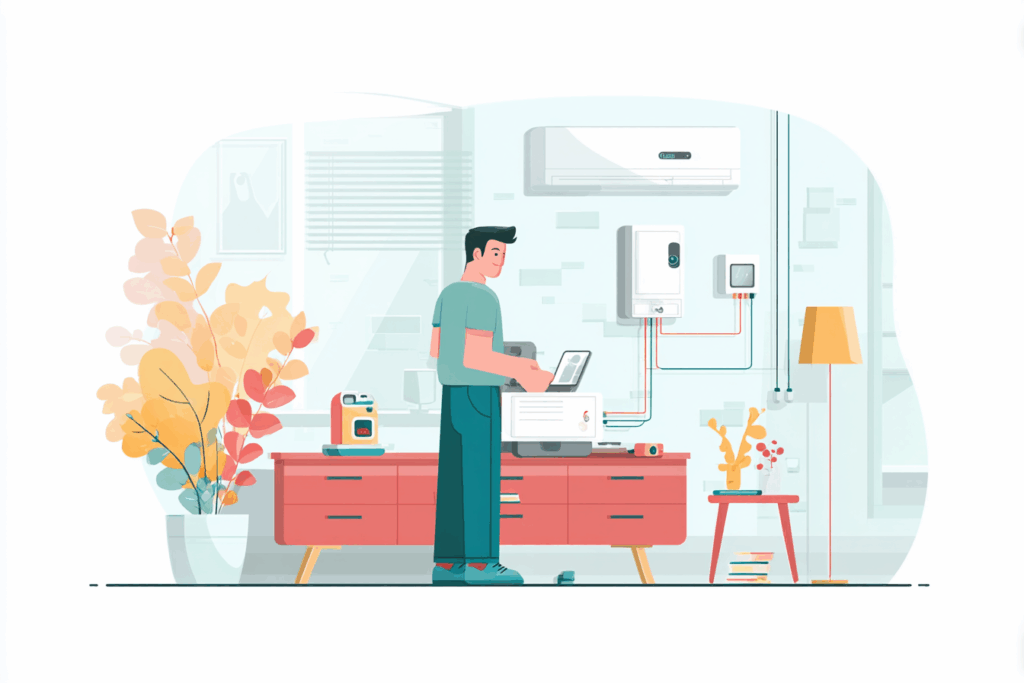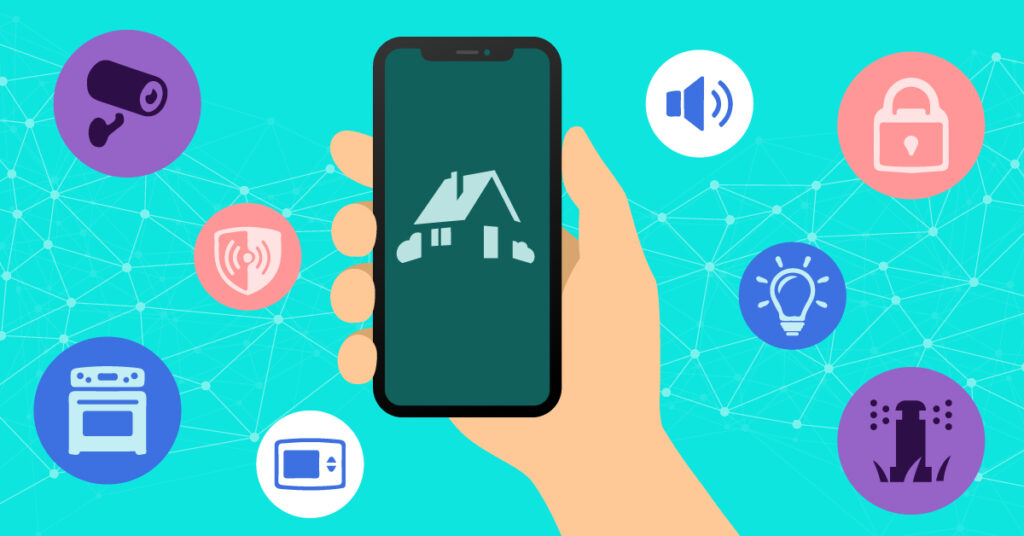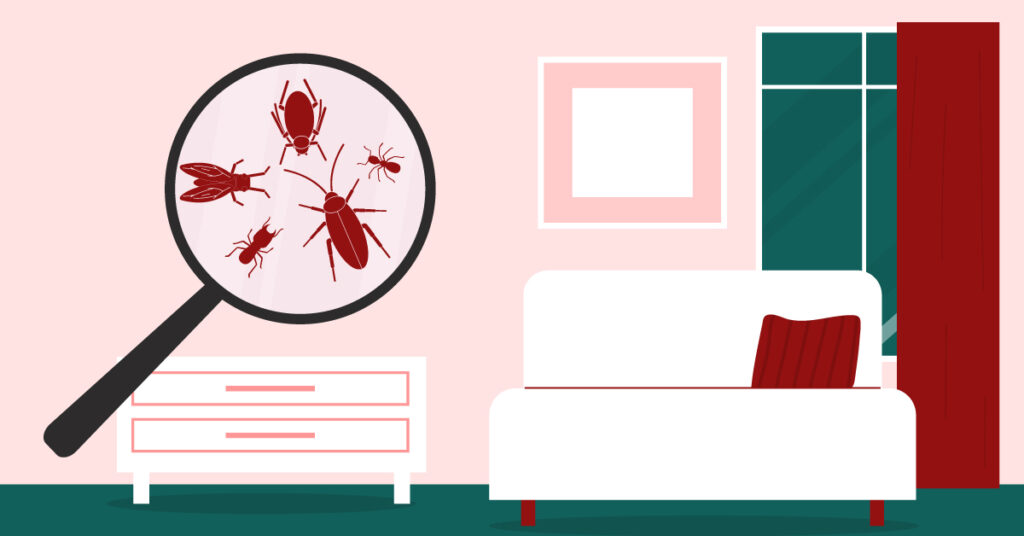Integrating home automation with your security system can transform the way you protect your home. By combining smart devices with traditional alarms and sensors, homeowners can boost responsiveness, deter intruders, and gain peace of mind. Whether you opt for a DIY setup or a professionally installed solution, modern technology, including smart locks, motion sensors, AI-enabled cameras, video doorbells, and remote monitoring services, works together to make your home safer and more convenient. This article explores how these integrations enhance security, provides practical examples, weighs DIY vs. professional systems, and discusses benefits and potential limitations – including privacy and data security considerations.
Key Technologies for a Smart Secure Home
Modern smart homes use a range of devices that network together to protect your property. Here are a few common technologies to consider for home security:
Smart Locks and Access Control
Smart locks replace or augment traditional deadbolts with electronic and wireless controls. They allow you to lock or unlock doors remotely via a smartphone app and to grant digital “keys” or codes to family members and guests. This means no more hiding spare keys outside, and you can monitor and control entry points in real time. Smart locks also log entries, so you can get alerts when someone comes home, adding both security and convenience. Many models integrate with voice assistants and alarm systems. If an alarm is triggered, the system can even lock doors automatically to contain a threat.
The Cost of Chasing Quick Fixes
Motion Sensors and Alarms
Motion sensors are the backbone of any security system, and when they’re “smart,” they become even more effective. These small detectors use infrared or other technology to sense movement in key areas (like hallways or near doors/windows). If unexpected motion is detected, the sensor can trigger an alarm or send an instant alert to your phone. In an automated setup, one device’s action can trigger another – for instance, a motion sensor could activate smart lights or sirens to startle an intruder. Many DIY and professional systems also include door/window contact sensors, as well as glass-break sensors, which work in tandem with motion detectors. Together, these sensors create a web of detection that can immediately notify you (and authorities, if professionally monitored) of a potential break-in. Advanced motion sensors are often pet-friendly, reducing false alarms from pets moving around the house.
Security Cameras with AI Surveillance
Smart security cameras watch over your home’s interior and exterior, recording video and streaming it to your phone or cloud storage. Today’s cameras often include AI-powered surveillance features that distinguish between normal activity and potential threats. For example, cameras equipped with night vision, motion detection, and AI analytics can tell a person apart from a pet or a passing car, so you only get alerted to true intrusions. Some high-end systems even use facial recognition to identify familiar faces. If a camera spots an unknown person lurking, it can instantly notify you with a video clip. In fact, certain camera brands leverage AI not just to detect, but to actively deter intruders – for instance, Vivint’s security cameras can automatically sound a warning or turn on a floodlight when they detect someone suspicious on your property.
Video Doorbell Cameras
Video doorbells have become one of the most popular smart security upgrades for American homes. These devices combine a doorbell with a camera, microphone, and speaker. When someone presses the bell (or even approaches your porch, in many models), you get an alert on your phone and can see a live video of who’s there and talk to them via two-way audio. This is useful for greeting visitors or scaring off solicitors and porch pirates – intruders are less likely to proceed if they know they’re being recorded. Even when you’re not home, you can converse with a person at your door (for example, telling a delivery person where to leave a package or pretending you are home to deter a potential burglar). Doorbell cams provide a clear view of your front entryway and often record motion-triggered clips, so you have evidence of any activity there. Integrated with a smart lock, you could even remotely unlock the door for a trusted visitor after verifying their identity on camera, all from your smartphone.
From Streaming to Shopping: How Families Waste Money Fast
Remote Monitoring and Smart Alerts
A huge advantage of integrating automation with security is the ability to monitor and control your system from anywhere. Nearly all smart security setups come with a mobile app or web portal. From a single interface, you can arm or disarm your alarm, view live camera feeds, lock or unlock doors, and get notifications. For example, if a sensor or camera detects unusual activity, you’ll get a push notification or email immediately, enabling you to respond or check the situation instantly. You can also receive smart notifications for non-emergencies, like when your kids arrive home from school (via a smart lock code entry or motion at the door). Remote control features let you do things like turn on lights or adjust the thermostat while you’re away, but in security terms, they ensure you’re never truly “away” from your house. Many systems support geofencing, which means your phone’s location can automate security modes – for instance, arming the system and locking doors when you drive away, and disarming when you return home.
Benefits of Home Automation for Security

Here are some key benefits of home automation implementations and outcomes:
Faster Response and Instant Alerts
Smart security systems excel at keeping you informed in real time. The moment a sensor trips or a camera spots trouble, an alert can ping your phone so you can act immediately.
Immediate smartphone alerts enable faster responses, whether that means triggering a loud alarm, calling 911, or remotely checking cameras to see what’s happening. If you have professional monitoring, the monitoring center is also instantly notified of break-ins or fire alarms so they can dispatch authorities. Automation can take response a step further by performing preset actions as soon as an event occurs: for example, if a break-in is detected, lights could turn on and all doors could lock automatically without you doing a thing. This kind of coordinated, instantaneous response isn’t possible in a traditional non-connected alarm system. Essentially, automation buys you time in an emergency, and that can make all the difference in minimizing damage or danger.
The Little Things at Home That Add Up to Big Costs
Intruder Deterrence
A smart home security system not only reacts to intrusions – it can help prevent them in the first place. Visible aspects, such as cameras mounted around the house and the presence of a video doorbell, are strong deterrents; burglars are less likely to target a home that appears well-protected. Automation lets you mimic occupancy even when you’re away: you can schedule smart lights to turn on each evening or randomly cycle lights, TVs, or speakers to make it seem like someone’s home, thwarting would-be intruders who might be watching. If someone does approach, motion-activated floodlight cameras can start recording and flood the area with light, often causing prowlers to flee. Some smart cameras, as mentioned, use AI to issue verbal warnings or siren sounds when a person is detected after hours. Even the act of answering a visitor through a doorbell camera from your office or vacation hotel can deter criminal behavior, since the person knows they’ve been seen. All these automated actions raise the stakes for intruders, making your home a harder target. In fact, early data suggests that communities with integrated smart security have seen noticeable drops in burglary rates (over 20% in some cases) thanks to the combination of surveillance and faster responses. Additionally, many insurance companies recognize the deterrence factor; homeowners with advanced security systems may qualify for lower insurance premiums (often 5–20% discounts) due to reduced risk.
Peace of Mind and Convenience
Perhaps the greatest benefit of a smart security system is the peace of mind it provides. Knowing that you can check on your home at any moment, get instant confirmation that everything is okay, and trust that automated rules will handle routine safety (like locking doors or arming the alarm at night) takes a huge mental burden off homeowners. You no longer have to worry, “Did I remember to lock the back door?” – if you did forget, your system can either lock it for you or let you secure it remotely with a tap on your phone. This peace of mind extends when you travel; even thousands of miles away, you can see live camera feeds of your property and feel assured that multiple eyes (yours and possibly a monitoring service) are keeping watch. Integrated systems also make daily life more convenient – you manage your security along with other home functions in one app, and devices can double up on duties (for instance, a smart smoke detector that not only sounds an alarm but also sends an alert and triggers smart lights to help wake you up). Overall, automation eliminates many small, mundane tasks and anxieties for homeowners. It feels good to know that your home is proactively looking after itself, allowing you to enjoy vacations or even a simple night’s sleep with greater confidence that you’ll be promptly alerted to any trouble. In security, there’s no substitute for peace of mind, and that in itself is a major selling point of smart home integration.
DIY vs. Professionally Installed Systems
When considering a smart home security upgrade, one big decision is whether to go the DIY route or use a professional installation and monitoring service. Both approaches can leverage the technologies and benefits described above; however, there are differences in cost, effort, and features that homeowners should take into consideration.
DIY Smart Security Solutions
DIY security systems are those you can purchase off-the-shelf (often online or at a retailer) and install on your own, without scheduling technicians. Popular U.S. examples include systems like SimpliSafe, Ring Alarm, Abode, and others that come as kits with sensors, a hub, and maybe cameras. The major advantage of DIY is cost savings and flexibility – you avoid installation fees, and often there are no long-term contracts. You can add devices as needed and set up the system on your own schedule. In fact, most modern DIY kits are wireless and pre-configured for easy setup; many homeowners install them in under an hour or two. DIY systems are also typically more affordable upfront, and you can choose self-monitoring (where alerts go only to you) to skip monthly fees. This makes them attractive for budget-conscious consumers or renters. However, there are trade-offs. Without professional help, you are responsible for placing sensors and troubleshooting any issues, which means there’s room for human error if a sensor isn’t ideally positioned or connected. You might not have someone immediately available to assist if something goes wrong during setup or use.
Additionally, DIY systems sometimes offer a narrower scope of protection out of the box (covering basics like intrusion and fire) unless you add components. The good news is many DIY brands now offer optional 24/7 professional monitoring, so you can pay a monthly fee for backup if you want – but it’s typically not as comprehensive as the service from dedicated security companies. In summary, DIY solutions are more convenient and affordable for those willing to handle the tech themselves, and they allow a high degree of customization. Just be prepared to be your own security manager in terms of maintenance and response if you choose not to have professional monitoring.
Are You Guilty of These Hidden Spending Mistakes?
Professional Security Systems and Monitoring
Professional systems, on the other hand, are provided by companies like ADT, Vivint, Brinks, Xfinity Home, and local security firms. With these, you usually get a consultation to determine your needs, then trained technicians install the equipment for you. The installation may involve more complex devices (like hardwired sensors, extensive camera systems, or integrated fire/carbon monoxide detectors) that ensure comprehensive coverage and optimal placement. One key benefit of professional systems is that they come with 24/7 professional monitoring services by default – meaning if an alarm goes off, a monitoring center will immediately verify and dispatch emergency responders, even if you’re asleep or away. This constant vigilance provides a level of safety that DIY self-monitoring can’t match if you are unreachable during an emergency. Professionally installed solutions also tend to offer a higher level of reliability and support. The equipment is often enterprise-grade, and the setup is done correctly (no worrying if you mounted something wrong), giving you better assurance that the system will work when it’s needed. Many professional providers will also handle ongoing maintenance or repairs, and they offer customer support if something malfunctions – you’re not on your own to fix it. Of course, the trade-offs are cost and flexibility. Professional security services usually require a multi-year contract and monthly monitoring fees. Installation might have an upfront fee (anywhere from $0 to a few hundred dollars, often rolled into your contract).
You’ll also have to accommodate the installer’s schedule and be at home for the installation appointment, which can be time-consuming. And while these systems increasingly support home automation (many companies now bundle smart locks, thermostats, etc.), you may be limited to the devices that the company supports or sells. Despite the higher cost, many homeowners value the “white-glove” service and peace of mind that come with professional solutions. For those less comfortable with technology or who have large properties to secure, a professional system can ensure everything is done right and that someone is always ready to respond in an emergency. It’s also worth noting that the landscape is evolving – some traditional companies (like ADT) now offer DIY options, and some DIY brands offer professional installation or monitoring, so you can sometimes get a mix of both according to your preference.
Limitations and Considerations
While smart home security integration offers many advantages, homeowners should be aware of potential limitations and take steps to mitigate them:
- Upfront Cost and Complexity: Building a truly comprehensive smart security system can be expensive, especially if you go for top-tier cameras, a variety of sensors, a smart video doorbell, smart locks on every door, etc. Professional systems spread costs through contracts, but DIY systems require buying the equipment outright.
- Internet Dependence and Reliability: Many smart security devices rely on your home Wi-Fi or a cloud service. If your internet or power goes out, some systems could be blinded or unable to send alerts (though basic alarms may still sound locally). To counter this, choose systems with cellular backup for alarms or local storage for cameras, or invest in a battery backup for your modem and hub so that a burglar can’t simply disable your security by cutting power. Also, be mindful of network overload – too many HD cameras streaming could tax a standard router. Upgrading your network or using wired connections for stationary cameras can maintain performance.
- Privacy and Data Security: Connecting security devices to the internet does introduce cybersecurity considerations. Each smart lock, camera, or sensor is effectively a new node on your network that could be targeted by hackers if not properly secured.
- Potential for False Alarms: As with any alarm system, smart or not, false alarms can happen – and they can be startling and inconvenient. Integration with AI has reduced many false triggers (like differentiating pets from intruders), but no system is perfect. DIY installations in particular might be more prone to false alarms if sensors aren’t calibrated or placed correctly.
In conclusion, integrating home automation with security systems is a powerful way to enhance your home’s protection. It offers layered security, where multiple smart devices work in unison – locking doors, turning on lights, recording video, and alerting you at the first hint of trouble. Both DIY and professionally installed solutions have made this technology accessible to homeowners across the U.S., so you can choose the route that fits your budget and comfort level.
By leveraging smart locks, sensors, AI cameras, doorbell cams, and 24/7 monitoring, you create a safer environment that adapts to threats quickly and even discourages them from happening at all.
The peace of mind you gain, knowing your home is watching out for you, is priceless. So whether you’re a tech-savvy DIYer or prefer the full-service approach, integrating home automation with your security is a smart move toward a safer, smarter home.
9 Surprising Ways Smart Families Waste Money at Home
You might also be interested in: How to Choose and Install a Wi-Fi Security Camera




